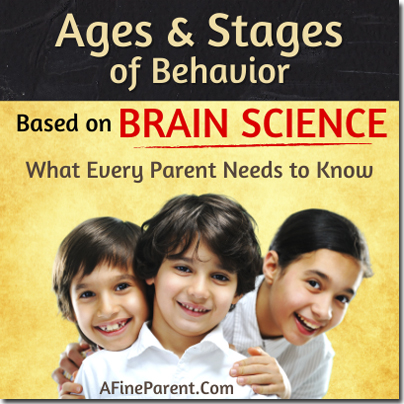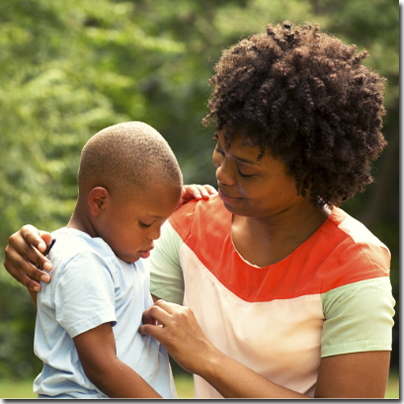 How do you handle frustration?
How do you handle frustration?
Do you vent to your spouse or a friend? Throw a mini-tantrum (albeit the “grown up” version)? Shut yourself into a bedroom and binge-watch Netflix with a pint of Ben & Jerrys? Punch a pillow? Go for a run? Pour a stiff drink? Meditate or pull out the yoga mat? Shrug it off and just move on?
Even as adults, we all find ourselves in situations that elicit behaviors we believe may help us cope with emotions…some perhaps healthier than others. While our mature minds may be better equipped for handling big emotions, we all still have our slip-ups; those moments we might look back on and realize that our behavior in response to the situation was less than stellar.
So why do we expect so much more from our children; whose neurological connections are still under construction and not yet fully able to process the big emotions that come along with life?
Even when misbehaviors are annoying, inconvenient, and frustrating, they still serve a purpose in development. If handled with empathy, consistency, limit-setting, and love, children can learn what behaviors work for them and what do not–both in getting what they want as well as getting the emotional stability that children crave.
So what’s the secret behind HOW to do this successfully? Well, if you figure out a method that works for every child in the world, please let me know! As with everything else in raising children, there is never a “one-size-fits-all” method.
Many factors can influence behavior, with age and brain development being at the top of the list.
We can take clues from understanding the brain development of a child and what is “age-appropriate” normal behavior to understand how we can effectively guide our kids.
Why Understanding the Ages and Stages of Behavior Matters
 A few weeks ago, my seven-year-old and five-year-old got into a tiff about a toy. It ended with some grabbing, pushing, and screaming. Pulling them apart from each other, I had them both go to their rooms for some space to calm down. After a quick minute, my daughter (the seven-year-old) was quiet, calm, and ready to talk about it and move on. My son, however, was still screaming, angry, and refusing to talk.
A few weeks ago, my seven-year-old and five-year-old got into a tiff about a toy. It ended with some grabbing, pushing, and screaming. Pulling them apart from each other, I had them both go to their rooms for some space to calm down. After a quick minute, my daughter (the seven-year-old) was quiet, calm, and ready to talk about it and move on. My son, however, was still screaming, angry, and refusing to talk.
Any expectations I had that the same consequence would work for both of my children went out the window. Age difference (even at only 16 months in the case of my children) can play a huge part at that young stage when children can experience huge bursts of neurological growth within a short period of time. Also referred to as a cognitive leap, the neurological growth of our children is more often characterized by leaps and spurts, growths and losses, than by a steady upward progress.
Not only do cognitive leaps play into what works for children only a few months apart, but cognitive leaps can also potentially contribute to the temperament of a child experiencing them and may therefore play into their ability to tolerate frustration. Before a new skill is learned, there is a period of relative chaos before the new connection is solidified…this period of chaos may be reflective in behavior.
Understanding cognitive leaps and how brain development contributes to misbehavior also allows us, as parents, to take a different outlook on misbehavior. It is not uncommon for parents to look at behaviors as “top down,” meaning that they are willful, purposeful, and intentful. It’s easy to take things personally when a behavior is frustrating or interrupting to our day.
In her book Beyond Behaviors, Dr. Mona Delahooke reminds us that many behaviors are “bottom up”, meaning that they are the result of a child not yet having control of how they move their body or what they say. Thinking about behaviors as “bottom up” allows us to better avoid thinking about misbehavior as manipulation and instead have a more proactive mindset.
 Curious to find out more about the differences between top down and bottom up behaviors? We partnered with Dr. Mona Delahooke, licensed clinical psychologist, Reflective Practice Mentor, and expert in infant and toddler mental health, to better understand what is behind our child’s challenging behaviors, and how to manage it.
Curious to find out more about the differences between top down and bottom up behaviors? We partnered with Dr. Mona Delahooke, licensed clinical psychologist, Reflective Practice Mentor, and expert in infant and toddler mental health, to better understand what is behind our child’s challenging behaviors, and how to manage it.
This packed masterclass is one of the 60+ masterclasses you get when you join the AFineParent Academy today. Click here to learn more.
The bright spot of misbehavior is that it gives us an opportunity to teach a new skill where one is missing- a chance to be a part of the brain development that our child is experiencing. Misbehavior also gives us the chance to break the negative cycles of punishment that we may have experienced as a child.
If you are trying to understand more about what behaviors you can expect from your child at their present age and what you can do about it, you have come to the right place! Read on for the breakdown!
Ages 2 and Under
 As our babies turn into young toddlers, their brains are quickly and rapidly developing. At birth, our baby’s brains are about a quarter the size of an adult brain–but will double in size within the first year of life! By the age of three, our child’s brain will be 80% of its maximum size as an adult. That’s a lot of growth! A newborn’s brain actually has all of the neurons it will need for life, but it’s the connections between these neurons that explode across young life.
As our babies turn into young toddlers, their brains are quickly and rapidly developing. At birth, our baby’s brains are about a quarter the size of an adult brain–but will double in size within the first year of life! By the age of three, our child’s brain will be 80% of its maximum size as an adult. That’s a lot of growth! A newborn’s brain actually has all of the neurons it will need for life, but it’s the connections between these neurons that explode across young life.
For our little ones, behaviors that are developmentally normal could include:
- Crying and other behaviors during times of separation from parents; this is often the result of increased awareness that they are separate from others.
- The imitation of behaviors they observe siblings or peers engage in; imitation skills skyrocket during this developmental age–sadly, both negative and positive!
- The beginning of defiant behaviors, particularly as they desire to do things independently that they may not fully have skills for yet.
- The beginning of what most may think of as “toddler tantrums,” particularly when becoming frustrated because they are still developing the skills needed to communicate effectively.
Note that at the upper end of this spectrum, kids may begin to understand the word “no” but they don’t yet have the brain development required to exercise self-control! So if they continue to do something even after you have told them “no” several times, it is not defiance, but simply (age-appropriate!) inability to comply.
What are the best strategies for behaviors during these early years? Serve and return interactions are simple interactions that we may not even realize have a huge impact. This could include:
- Making eye contact with our baby while changing their diaper
- Talking back to our baby when they coo and babble
- Talking to our children while they play- such as asking questions or describing what they are doing in an interactive way
- Asking open ended questions, such as “What do you think would happen…” or “I wonder why…”
- Labeling and discussing emotions as we see our children experience them (make note that this tactic is useful in ALL age groups as it increases emotional intelligence)
It can also be helpful to focus on thinking ahead for our children at this young age, particularly when we know a situation is going to be challenging for our child. Changes of environment and distraction can also be helpful techniques for very young children. For example, we can gently take our child’s hand and guide them to another room while coming up with a “task” they can help us with to distract them from the initial frustration.
Ages 3 to 6 Years
 As our children move from the baby years to the heart of the toddler years and then slide into early elementary school, the brain continues to expand and make neuron connections.
As our children move from the baby years to the heart of the toddler years and then slide into early elementary school, the brain continues to expand and make neuron connections.
Myelination is the connection of nerve cells that allows for faster and easier processing time. Increased myelination during the toddler to early elementary years also lends itself to increased logical reasoning; but while your child is still developing these connections, they may make decisions based on illogical or incorrect logic and reasoning.
As children become more aware of those around them, this is also an age of intense social growth. While it’s amazing to watch their world expand and include more environments and people, they are still developing the skills needed to successfully handle a larger world.
Behaviors that may be expected and developmentally normal at this age include:
- Whining: Take note that even though it may FEEL like this is an intentional attempt to grate on your nerves, our children are likely not even aware they are doing it!
- Not listening: Also easy to take as a personal attack on our feng shui as we repeat ourselves for the 143rd time…children at this age begin to understand that us asking them to do something doesn’t actually mean that they HAVE to do it.
- Impulsivity: Even when our children know and understand that a particular behavior is not accepted, they may still be developing the brain connections needed for self-control. The result of this brain-based imbalance can mean actions that happen on a whim.
Sound familiar? If so, read on to find some tactics that make the most sense to use with this age group:
- Catch them being good: It’s easy to not notice our child’s behavior until it becomes an inconvenience to the flow of the day. This can accidentally encourage attention-seeking behavior when our children figure out that the best method to get quick attention is through negative behaviors. Rather than waiting, we can make purposeful efforts to catch our child demonstrating the good behavior we want and call them out for it in a positive way.
- Model the behavior we want to see: Children learn much more from watching us than from listening to our words. We want to model what we want our children to exhibit! For example, when you get angry at your child, instead of yelling at them, stop for a minute and take deep breaths. And narrate it out loud: “Mommy is getting angry. She has to take deep breaths so she doesn’t end up shouting.”
- Set clear boundaries and limits: When setting limits and boundaries for young children, it’s important to make sure they are simple, realistic, and enforceable. Less words are always better in setting limits; too many words can be confusing to young children, especially when they are frustrated or upset. We also want to ensure that boundaries and rules are realistic to what our children are capable of and that we can consistently enforce the consequences that may come with not following the limit.
- Raise awareness of impulsivity: It can sometimes be helpful to interrupt an impulsive behavior with a simple statement to give the child awareness of the behavior in the moment. For example, a child that interrupts often might be told, “You are interrupting me. You can put your hand on my arm so I know you need me and I will let you know when I’m ready to help.” Don’t forget that when calling awareness to a behavior and suggesting an alternate behavior, it’s important to teach the alternate behavior outside of the moment! For children who impulsively interrupt, this Bluey episode may be a great method of teaching the “touch my arm to let me know you need me” method mentioned above.
Ages 7 to 11 Years
 As our children move through elementary school, fibers continue to grow between neurons and myelin (the white matter of the brain). These connections between different parts of the brain allow for better memory retention and allow for our children to make connections between new learning and previous learning. As our children’s skills become more automatic, the brain’s resources are more free to work on skills that are more complex.
As our children move through elementary school, fibers continue to grow between neurons and myelin (the white matter of the brain). These connections between different parts of the brain allow for better memory retention and allow for our children to make connections between new learning and previous learning. As our children’s skills become more automatic, the brain’s resources are more free to work on skills that are more complex.
Yet while our child’s brain is better able to process and make connections between their actions and the consequences that may come from them, they are also increasingly exposed to stressors and dilemmas that must be navigated…with a still underdeveloped brain!
Some typical behaviors that may be observed during these years may be:
- Lying: Most often lying happens for one of three reasons: to get attention, to avoid getting into trouble, or as an attempt to feel better about themselves.
- Defiance: As children become more independent, it is normal for them to test the boundaries of how far they can push.
- Disrespect: Name-calling, throwing things, mocking others are just a few examples. Disrespect can feel very personal and can be a tricky trigger to many adults.
- Impulsivity: Yes, this continues from the last age group! While younger kids may more typically exhibit physical impulsivity, older children are more likely to demonstrate verbal impulsivity (such as blurting out something mean).
- Sibling fighting: While we may believe that a sibling should be a built-in best friend, it rarely works like this throughout the entire lifespan of our children. At some point sibling rivalry and fighting will occur.
The amazing thing about this age group is that they have a longer attention span, better self-control, and an increased ability to process information and make connections between behaviors and outcomes. Strategies that may be helpful for children within this age range include:
- Praise: While praise is important in all ages and stages, this particular age group can really benefit from it. While some of the behaviors above may leave us feeling like our children really don’t care much about hurting our feelings, the reality is that they crave approval and attention. We can also be more specific in our praise at this age, being careful to praise the effort behind a success, such as “I love how hard you hustled today at soccer,” rather than praising the goal they made.
- Establish clear family rules: Establishing rules ahead of time can help avoid a power struggle when they are broken. It can also be a good idea to have children included in the rule-creating process, as it will help them feel some ownership.
- Consequences: Consequences to actions may be impactful at this age, especially when they are logical and natural. The natural consequence for refusing to complete homework is that the child will not have it when the teacher asks the next day. A logical consequence for not getting off electronics when asked is that computer privileges are not available for 24 hours after.
- Avoid the power struggle: This can be tricky when it feels like your child’s main goal in life is to get under your skin! We have all caught ourselves in the throes of a power struggle at one time or another. Rather than going back and forth, we can give a single warning with the consequence attached and then allow our child space to choose his action (and therefore, consequence). It can also be helpful to remind our child of BOTH choices (desired and undesired). For example, instead of saying “You MUST clean your room because I’m your parent and I’m telling you to,” we can say “I’m asking you to clean your room. If you clean it, then you can watch TV. If you do not clean it, then you will not have time to watch TV.” The first statement is a clear opportunity for a child to call our bluff, knowing that if they refuse we cannot physically make them clean their room. The second, however, is nonconfrontational and puts the ball in their court…while also being a reminder that the consequence of their action will also be theirs to deal with.
- Rephrasing our statements: This is touched on already in the above suggestions, but also deserves it’s own section! If catching your child in a lie, it may be helpful to refrain from statements of accusation and instead say “Is that what happened, or is that what you wish had happened?” We can also turn consequences into a reward by rephrasing statements such as “You can’t ride your bike because your room is a mess,” to “You can ride your bike when your room is clean.”
Ages 12 and Over
 By the time our children head into their teen years and slowly verge on the cusp of adulthood, the brain is close to reaching its full size. The largest changes during this time include the “pruning” away of grey matter, allowing the brain to become more efficient. This process begins in the back of the brain, with the prefrontal cortex being remodeled last.
By the time our children head into their teen years and slowly verge on the cusp of adulthood, the brain is close to reaching its full size. The largest changes during this time include the “pruning” away of grey matter, allowing the brain to become more efficient. This process begins in the back of the brain, with the prefrontal cortex being remodeled last.
Because the prefrontal cortex is the last part of the brain to fully develop, teenagers may still make decisions using a part of this area of the brain called the amygdala. The amygdala is the part of the brain associated with emotions, impulses, aggression and instinctive behavior.
Developmentally normal behaviors in teenages may include:
- Mood swings: As puberty hits and hormones cause chemical changes to their bodies, most teenagers will experience mood swings that likely leave them feeling just as confused as we are by their sudden shifts of emotion.
- Obsession with communication devices and social media: The age of electronic devices has made us come to rely on them for communicating and connecting to others. Teenagers become especially hooked on this, as electronic usage likely shifts slightly from gaming to social media.
- Indecisiveness: The physical and emotional changes that a teen experiences may leave them feeling confused; this can lead to confusion when faced with even seemingly simple decisions.
- Decreased communication: Our teenagers become more dependent on their friends for support than they do from their parents; this may lend itself to a decrease in willingness to share and express themselves to parents as they once did as an elementary school student.
While it is completely normal for our teenagers to begin relying more on their friends for emotional support (and to be left spinning as we watch our teen’s emotions sky rocket and then plummet), this does not mean that they aren’t seeking support from their parents! Some ways in which we can be both supportive and consistent for our teenagers includes:
- Stay calm: Although there are plenty of scary risks that our teenagers may take, overreacting, screaming, yelling, or losing our calm will only serve as a reminder to teenagers that we may not react well in the future, leading them to avoid telling us the things we want them to tell us! This may mean we take the time to trial and find strategies that work well for us–but it will be worth the effort!
- Monitor internet use and set limits: Not allowing internet use in any manner (or not allowing a cell phone) has the potential to backfire and lead to sneaking and lying. There are many apps that can help us monitor internet use, texts, and social media. Additionally, we might consider setting limits or time periods in which phones cannot be used while at home.
- Avoid trivializing emotions: Even if it may feel like our child is overreacting, the worst thing we can do is minimize their very real feelings. Rather than brushing off their emotions, we can instead listen, attempt to emphasize, and validate their emotions.
- Introduce decision-making skills: We can encourage decision-making skills by first avoiding making decisions for our children. Instead, we can help them navigate through decision-making in a way that encourages future independence. This may include evaluating the problem and solutions, listing possible options, prompting them to think of outcomes to options, and making a plan.
What Other Factors Influence Behavior?
 Gender may also play a part in behaviors, although the jury could swing either way on this one! A study completed in Australia suggests that between the ages of two and three, boys were reported to be more likely to demonstrate “externalizing behaviors” such as aggressiveness and destructiveness; while girls were more likely to have “internalizing problems,” such as anxiety.
Gender may also play a part in behaviors, although the jury could swing either way on this one! A study completed in Australia suggests that between the ages of two and three, boys were reported to be more likely to demonstrate “externalizing behaviors” such as aggressiveness and destructiveness; while girls were more likely to have “internalizing problems,” such as anxiety.
Yet research has also shown that gender-stereotypes in parenting during early childhood has an influence later in life; therefore, it could play a larger part in the behaviors of young children, larger than the actual gender of the child does.
Outside of age and potentially gender, there are only say about…a hundred other consistent precipitating factors that can influence a child’s behavior at any stage in their development. Some of these factors may include:
- Family relationships
- Events that occur in the child’s life
- The amount of social experiences a child has access to
- Cultural expectations, experiences, and child-rearing practices
- Exposure to drugs, alcohol, or other environmental risks
- A child’s natural temperament
- Presence of a disability
What do you first think of when you hear the word non-neurotypical development? For most of us, it is likely that we most often associate the word with the presence of a disability that may delay certain aspects of development.
Neurodiversity refers to the unique ways in which people experience, interact with, and interpret the world. And while disabilities may be a precipitating factor in child development, there are still so many strengths to be found in differences. It will always be in the best interest of our children (both neurotypical and non-neurotypical) if we stop viewing differences as weaknesses!
There may also be another hundred possible “shifting” precipitating factors that influence a child’s behavior at any given moment. Shifting factors may influence behavior in a way in which what worked in one instance does not work in a similar instance the next day. These may include:
- Hunger/thirst
- Sickness
- Pain
- Need for medication
- Tired
- Change in routine
- Allergies
- Lack of exercise
- Poor diet
- Overstimulation & understimulation
- Screen time
So where does this knowledge leave us?
As parents, it is helpful to have a general understanding of what to expect from our child as they move through the stages of development and what strategies may be most helpful; however, these guidelines are not a catch-all. It is always in our child’s best interest for us to take into account the many precipitating factors that can influence behavior, the role that our child’s quickly developing mind may play, and the unique temperaments and personalities of our children.
There is no one better suited for figuring out your child’s behavior and handling challenges with love and support than you!
The 2-Minute Action Plan for Fine Parents
Now that you’ve reached the action plan, flip back to the section that addresses your child’s age group and note/journal the following:
- What behaviors on this list do I notice from my child?
- What observations can I make from these behaviors and knowing more about the current state of development of their brain?
- What strategies have I not tried that stand out?
- What strategies have I tried but have not been consistent in?
Move ahead to the “other factors” section and scan over both lists of precipitating factors. Note/journal the factors on those lists that ring true for your child and then answer the following question about each factor noted:
- How is this factor a potential roadblock for my child’s success and can I do something about it to help minimize it or remove it completely?
The Ongoing Action Plan for Fine Parents
While strategies have been broken up for the purpose of leading parents towards those best suited for the age of their child, the reality is that many strategies can be helpful across the entire span of childhood.
Studies have found that it takes between 18 and 254 days, or an average of 66 days, to break a habit or form a new behavior. And this is what can be expected for an adult with a fully formed and matured brain!
Knowing that behaviors take this long to become automatic, it’s easy to see just how important it is for parents to be consistent in the use of strategies as their child grows up. The ongoing action plan is to make the commitment of consistency to your child. This may mean talking with a parenting partner, friend, journaling, or making goal cards to allow for frequent reminders of how that consistency will look over the years. You’ve got this!
Excellent article. I am not a parent, but I am a teacher and an aunt. The topic of behavior is fascinating to me, and how to best address it. My area to work on is communicating consequences logical why’s that is appropriate to the child at various stages of age (as I teach 10 -18 year olds). Also my area to work on is when the child provides their own logical response at the moment I am left bewildered. I have hear of using the broken record technique, but I honestly struggle with it. I want to be a fair person, and sometimes staying to the broken record I feel I am not listening or being fair. I feel that is where my older students know they can gain an advantage. Thank you for your article and the clarity of the steps to substitute new intentions and responses to common behavioral struggles.
Hi Angelica! Thanks for your insightful comment. You definitely do not need to be a parent to benefit from reading A Fine Parent articles or researching the topic of behavior. Thank you for the work you do as a teacher- and clearly, you are an amazing one! Thanks for reading. =)